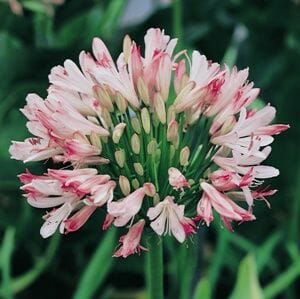Understanding the Art of Agapanthus Treatment: Important Steps for Healthy Development and Vivid Blooms
In the world of cultivation, the growing of agapanthus stands as a rewarding undertaking for those who seek to support these classy flowering plants. With their striking blooms and graceful vegetation, agapanthus has captured the interest of garden enthusiasts worldwide. Nonetheless, accomplishing optimal growth and vivid blossoms requires a nuanced method that encompasses various essential steps. From choosing the right selection to grasping trimming methods, the journey towards cultivating prospering agapanthus plants is diverse and holds the essential to opening the full capacity of these agricultural treasures.

Picking the Right Agapanthus Variety

When picking the appropriate Agapanthus variety for your yard, think about variables such as environment suitability, flower color, and development routine. Furthermore, take into consideration the environment in your region to make certain the Agapanthus range you select can prosper in your specific conditions. Recognizing the development habit of various Agapanthus selections is crucial for correct placement within your garden.
Ideal Planting Problems
Taking into consideration the optimal environmental demands is essential for effective Agapanthus growing. Agapanthus plants are sensitive to cool temperature levels and ought to be protected from frost during wintertime months.
To make sure healthy growth and vivid flowers, plant Agapanthus light bulbs at a depth of about 2-4 inches and area them 8-12 inches apart. Including organic issue, such as compost, to the dirt can improve drain and fertility, promoting durable root development. Mulching around the base of the plants helps retain moisture and reduces weed development. Routine watering is crucial, specifically during the expanding season, to keep the soil consistently moist however not saturated.
Watering and Fertilizing Tips
Keeping correct dampness degrees and supplying vital nutrients are crucial elements in the care regimen for Agapanthus plants. When it pertains to watering Agapanthus, it is crucial to strike a balance. These plants favor continually wet dirt however are susceptible to root rot if overwatered. Throughout the expanding period, water deeply once a week, making certain the soil is well-draining to prevent waterlogging. In hotter climates or throughout periods of drought, more regular watering may be required to maintain the soil uniformly moist. However, lower watering in the winter season to avoid waterlogged conditions.
Feeding Agapanthus is essential for promoting healthy development and prolific flowers. Apply a well balanced plant food, such as a 10-10-10 formula, in the very early spring as new development emerges. Repeat this application every 6-8 weeks throughout the expanding period. Avoid extreme fertilizing, as it can result in lavish vegetation at the expense of blossoms. Always comply with the manufacturer's directions for proper dilution and application methods. By adhering to these watering and fertilizing suggestions, you can ensure your Agapanthus plants prosper and create vivid, lasting blossoms.
Pruning Techniques for Agapanthus
Trimming Agapanthus plants at the appropriate times and with correct strategies is essential for maintaining their wellness and advertising optimum development and blooming. The suitable time to trim Agapanthus is in late wintertime or very early spring prior to brand-new development emerges.
For flowered stems, wait until the flowers have perished and then trim them back to the base. This not just cleans from this source up the plant's appearance however also urges the growth of new blossom buds. Deadheading spent flowers can likewise reroute the plant's power right into generating more flowers instead than setting seeds. Nonetheless, if you desire to accumulate seeds for proliferation, leave some flowers to completely dry and fully grown on the plant.
Keep in mind to use tidy, sharp tools to make accurate cuts and reduce the risk of presenting illness. Agapanthus. Regular trimming will certainly help maintain your Agapanthus looking healthy and balanced and neat while ensuring a plentiful display screen of lovely blossoms
Handling Typical Parasites and Illness
After ensuring correct trimming strategies for Agapanthus, it is imp source essential to attend to typical pests and illness that can influence the wellness and vigor of these plants. Agapanthus plants click for more info are typically hardy but can still fall sufferer to particular issues. One usual parasite that influences Agapanthus is the Agapanthus gall midget. This little, orange fly lays its eggs in the foliage, leading to distorted growth and flower buds that fail to open up. To fight this insect, trim and ruin any type of damaged plant parts and think about making use of insecticidal soap.
Another usual issue is fungal fallen leave place, which presents as dark sores on the fallen leaves. To avoid fungal illness, ensure good air circulation around the plants, prevent above watering, and remove any kind of infected leaves immediately. In addition, Agapanthus plants can endure from origin rot if they are planted in improperly draining pipes soil. To prevent this, plant Agapanthus in well-draining dirt and stay clear of overwatering. By being attentive and taking timely activity against pests and diseases, you can aid your Agapanthus plants thrive and produce vivid blooms.

Verdict
To conclude, understanding the art of agapanthus treatment includes choosing the ideal selection, supplying ideal planting conditions, correct watering and feeding, ideal pruning methods, and dealing with common parasites and diseases. By following these vital steps, you can guarantee healthy and balanced growth and vibrant blossoms for your agapanthus plants. Remember to consistently monitor and preserve your plants to advertise their general wellness and long life.
To make sure healthy development and vibrant blooms, plant Agapanthus light bulbs at a deepness of about 2-4 inches and area them 8-12 inches apart. By adhering to these watering and fertilizing pointers, you can ensure your Agapanthus plants thrive and generate dynamic, resilient flowers.
One usual bug that impacts Agapanthus is the Agapanthus gall midge. Additionally, Agapanthus plants can suffer from origin rot if they are planted in improperly draining pipes soil. By complying with these crucial actions, you can make certain healthy growth and vivid blossoms for your agapanthus plants.